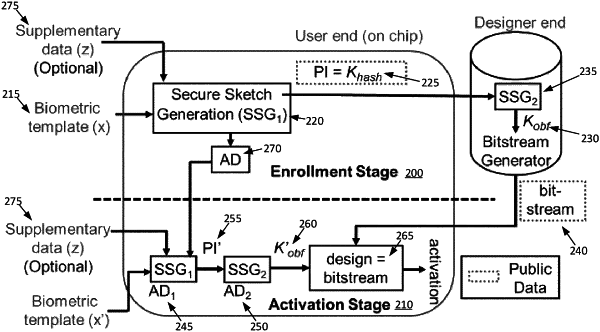| CPC G06F 21/32 (2013.01) [G06F 21/602 (2013.01); H04L 9/0643 (2013.01); H04L 9/3278 (2013.01)] | 18 Claims |

|
1. A method for configuring biometric access for a plurality of legitimate users to a design, the method comprising:
receiving a plurality of biometric templates, wherein each biometric template has originated from one of the plurality of legitimate users;
obtaining a protected biometric template for each of the plurality of biometric templates using a first secure sketch generator (SSG) and first transformation parameters;
determining a common protected biometric template for the plurality of legitimate users based at least in part on combining a plurality of protected biometric templates using a Merkle tree and a corresponding index value for each of the plurality of legitimate users;
causing the design to be obfuscated based at least in part on a common obfuscation key generated from the common protected biometric template using a second SSG and second transformation parameters, wherein the design is configured to be de-obfuscated for a given legitimate user responsive to biometric input from the given legitimate user.
|